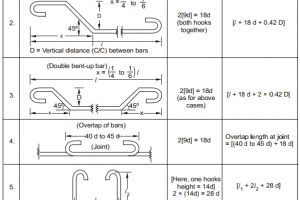Resource Levelling Allocation Management Techniques
RESOURCES
- Means to complete project activities are called RESOURCES.
- Examples are People, Machinery, Material, Capital, Time, etc.
- Peak demands of resources over short periods is undesirable.
- Resources may be limited or unlimited in nature from project to project.
Resource Utilization Factor
- The degree to which a resource may be used is measured in terms of a Resource Utilization Factor.
Mathematically,
Usable Resources x Days Used x 100 R.U.F. (%) = Usable Resources x Days available.
Resource Profile
- Plot of daily Resource requirements versus time is called
- Resource Profile
- Resource-use Graph
- Histogram
Resource Allocation
To assign required resources to work activities such that available resources are not exceeded.
Resource Leveling
- Smoothening of a resource demand is called Resource leveling.
- Resource leveling is an attempt to assign resources to project activities in a manner that will improve productivity and efficiency.
Ideal Condition
Early-start and Late-start Histograms
Ideal Level Histogram
Practical & Target Histogram
Objects of Resource Leveling
- Fixed Crew Size
- Learning Curve
- Start-up Problems
- Completion Congestion
Techniques for Resource Leveling
- Sum of Resources Square method
- Burgess Leveling Procedure
- Wiest Leveling Procedure
Limited Resource Allocation
- Where resources e.g., plant, labour, materials (or capitals) are restricted, the activities have to be rescheduled to satisfy this form of constraint. This will imply scheduling those activities that use such resources, in a sequential or serial fashion. And this might create the situation where activities overrun their allowable float.
- If resource limitations are known at the outset, for example, only one site crane is available, then the original network plan for the project can include this constraint.
- In certain cases, it may be possible to hire additional plant to cover peak requirements; in this case no rescheduling of the activities is called for
Algorithm
- Calculate initial early start (ES) and late start (LS) time for each activity in the project, and set time now equal to1, i.e., T = 1
- Determine the initial eligible activity set (EAS), i.e., those activities with all predecessor activities scheduled.
- From among the members of the current EAS, determine the ordered scheduling set (OSS) of activities i.e., activities with ES < T, ordered according to LS with smallest values first and within this characteristic, according to least activity duration first.
- Consider the activities in OSS in the order listed and schedule those activities for which sufficient resources are available for the duration of the activity. As activities are scheduled, update the level of resources available, and update the members of EAS.
- Have all activities been scheduled, i.e., is EAS empty set ?
If Yes STOP
If No Set T new = T old + 1, and
compute new ES times for the updated EAS.
- Go to step 3 and continue.
EXAMPLE
Reschedule the Project given in Figure keeping in view the limitation of Resources L to be 8 per day and M to be 6 per day.
Let T = 1
EAS : A B C (E F)
ES : 1 1 1
LS : 6 1 7
OSS : B A C
Schedule B to days 1-2
Remove B from EAS
Add F to EAS
Let T = 2
EAS : A C E F
ES : 2 2 3 3
LS : 6 7 4 3
OSS : A C
No Activity can be scheduled on T = 2
Let T = 3
EAS : A C E F (I D)
ES : 3 3 3 3
LS : 6 7 4 3
OSS : F E A C
Schedule F to days 3-10
Remove F from EAS
Schedule E to days 3-7
Remove E from EAS.
Schedule A to days 3-4
Remove A from EAS EAS
Add I & D to EAS
Let T = 4
EAS : C I D
ES : 4 8 5
LS : 7 9 8
OSS : C
No Activity can be scheduled on T = 4
Let T = 5
EAS : C I D ( G )
ES : 5 8 5
LS : 7 9 8
OSS : C D
Schedule C to day 5
Remove C from EAS
Add G to EAS
Let T = 6
EAS : I D G
ES : 8 6 6
LS : 9 8 8
OSS : G D
No Activity can be scheduled on T = 6
Note: G and D have same LS. These are ordered on less duration first.









